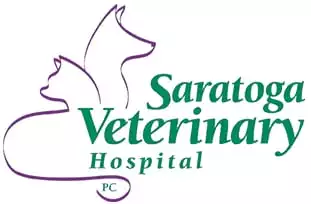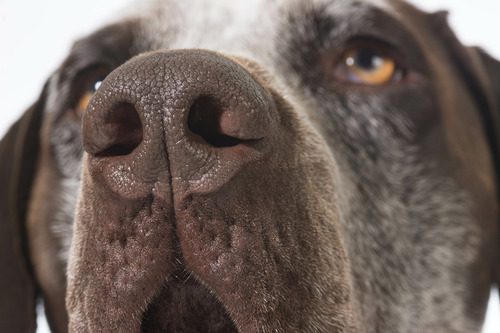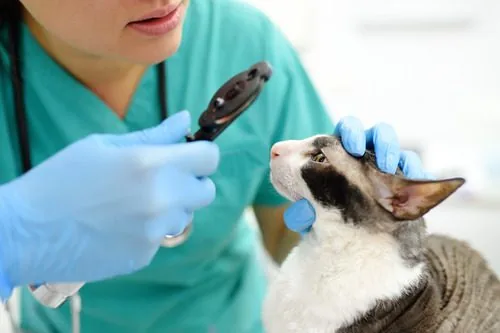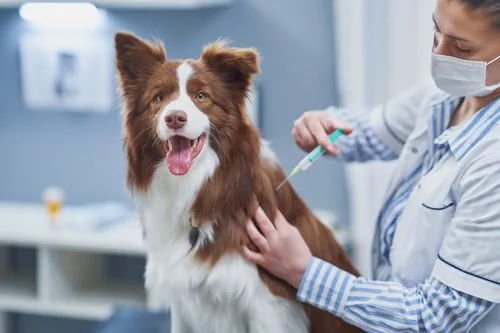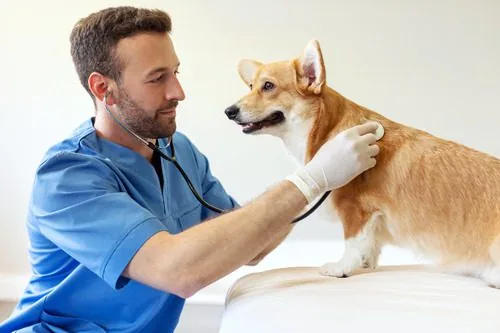Dog Teeth Brushing: Everything Pet Parents Near Saratoga Springs, NY Should Know
Our dogs are our best friends. One of the healthiest things we can do for them is to brush their teeth. It has been reported that eighty percent of dogs have some type of dental disease by the time they are three years old, which is why regular dog teeth brushing is so important. Only two percent of pet parents brush their dog’s teeth daily, leaving our best friends susceptible to an array of health issues that could otherwise be prevented.
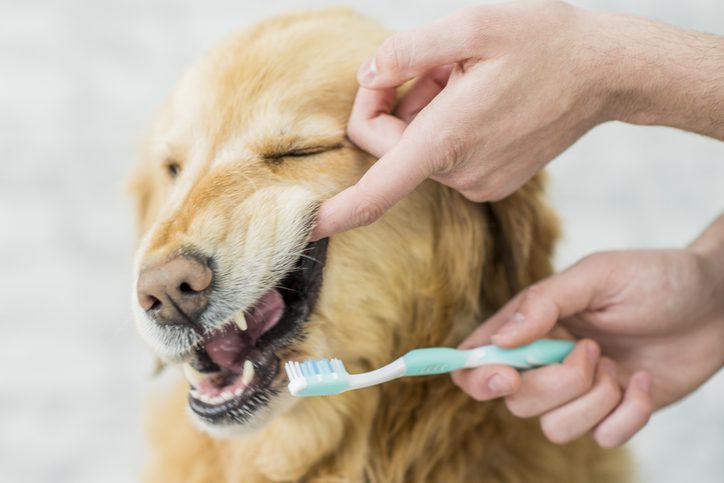
Helpful Tips for Dog Teeth Brushing in Saratoga Springs, NY
Now that we know that dog teeth brushing plays an important role in your dog’s overall health, it helps to know some tips on how to make this the best experience possible for your pet. If you need additional advice, or would prefer to have a professional do this, contact a veterinarian near Saratoga Springs, NY to schedule an appointment.
Below are some helpful tips to keep in mind about dog teeth brushing:
Build Trust with Your Dog
You cannot just dive into your dog’s mouth. Your dog has to trust you. Just like the first time you put a collar on your dog, they have to learn that this will lead to a great experience. The younger your dog is when you start brushing their teeth, the more impact it will have on their long-term health.
Trust is one of the most important things to have to help ensure a relaxing experience for your pet.
Consult with a Veterinarian
Before you begin brushing your dog’s teeth, you should visit your vet. Your veterinarian near Saratoga Springs will be able to offer additional advice on how to brush your dog’s teeth at home.
Suppose your dog is full-grown and has not had much dental care. In that case, your vet may recommend scheduling an appointment for professional dog teeth cleaning services. Either way, a veterinarian will always be the best resource when it comes to your dog’s health.
Your Dog Should be as Relaxed as Possible
Dog teeth brushing should be done during a relaxing time. If your dog is full of energy, it is best to pick a different time or take them for a long walk first. The more relaxed your pet is, the easier this experience will be.
Positive reinforcement and treats are a great way to reward your dog for being cooperative.
Make Sure Your Dog is Comfortable with What You’re Doing
To successfully brush your dog’s teeth, your dog must be comfortable with the whole situation. You can help with this by slowly introducing them to the actions that will go into brushing their teeth.
Do not stand above your dog; position yourself at their level. Do not restrain your dog, as this can present the opportunity for your dog to become scared. Take your time to make sure this is a fun interaction.
Double Check That You Have All of the Supplies You Need
Another good tip to keep in mind about dog teeth brushing is to make sure you have all of the necessary supplies. At this time, you will want to have dog-specific toothpaste, treats, and possibly even teeth cleaning toys or bones.
Consider Using Music Therapy (If Needed)
If your dog seems anxious, you may want to incorporate a little music therapy. Soft, calming music can help your dog relax during this process.
The Importance of Dog Toothpaste
If your dog lets you expose their teeth, you can introduce them to dog toothpaste. Do NOT run to your medicine cabinet and grab human toothpaste. It is toxic to your dog. Dog toothpaste is specially designed to meet your pet’s needs.
Dog toothpaste mixes with your dog’s saliva and becomes an active antibacterial compound that works against plaque and bacterial buildup. It also contains enzymes (types of proteins) that interact with the bacteria and food particles in their mouth, breaking them down.
Dog Teeth Brushing Stages
Now that we’ve discussed some helpful tips on how to make this the best experience for you and your pet, it’s important to talk about the common stages of dog teeth brushing. While all of these stages may not apply to every dog, it will be beneficial to know what to generally expect when you start going through this process with your pet.
When in doubt, call your veterinarian near Saratoga Springs if you want more information or advice on how to handle these stages. Your vet will be able to help you and provide additional insights on what would be best for your pet.
The common stages of dog teeth brushing that all pet parents should know include:
Stage 1 – Get Your Pet Used to Dog Toothpaste
The first thing you want to do at this stage is get your dog used to their toothpaste. Place a bit of the toothpaste on your finger and let them lick it off. A new puppy may nibble on your fingers, but you must gently teach them not to do this.
You may notice your dog loses interest in the toothpaste. This can be very common, but isn’t something that should concern you. There are a wide variety of flavors available.
Stage 2 – Start Using Your Finger to Brush Your Dog’s Teeth
Now that they’ve tasted the toothpaste, you can use your finger as a toothbrush (at least to start out). Do not worry about having to brush all of your dog’s teeth. This step is to help them simply get used to the teeth brushing process.
The best goal to have at this time is to touch all thirty-eight of your dog’s teeth with the toothpaste on your finger.
Stage 3 – Start Incorporating the Finger Tooth Brush Glove (If You’re Using One)
If you plan on using one, this next step may present the best time for you to able to put on the finger tooth brush glove. These are disposable, so you can throw them away after each use.
However, when you first touch your dog’s teeth with this, they may back away. Let them but encourage them to return to you. If this is the case, now is where extra treats may come in handy.
Stage 4 – Introduce Your Dog to Their Toothbrush (If Not Using a Finger Tooth Brush Glove)
The fourth stage of the dog teeth brushing process is to introduce your dog to the toothbrush they will be using.
The best way to do this is to start using the toothbrush with their favorite flavor of toothpaste; if they chew on it a little bit, that is a good sign. However, you do not want them to learn this is a new chew toy.
Start touching the front of their mouth with the toothbrush, as this will allow your dog to get used to this new feeling. Gently hold their snouts and slowly move the brush along their front teeth. If this is too much for your dog and they have backed away, encourage them to come back.
What to Do if Your Dog Keeps Backing Away
Suppose they continue to back away and are suspicious of this new object that’s in their mouth. In that case, you can wrap some gauze around your finger with the toothpaste on it to teach them to accept different textures.
Your dog may think this is okay for a moment, then not so much the next. The easiest way to overcome this is by using a brush – treat – brush technique. It won’t take long for your dog to allow you to brush for more extended periods.
Another thing you can do is to break up the teeth brushing sessions. Focus on one part of the mouth, complete it, and allow them some time to chew. Then come back and do another.
Stage 5 – Actually Brushing Your Dog’s Teeth
Lift their lip and place the toothbrush at a forty-five-degree angle, massaging the gum line and clearing the plaque away. Brush in small circles from the bottom of the tooth to the top.
Some bleeding may occur. Slight bleeding is okay; however, if there is significant bleeding every time you brush, it could be a sign gum disease is already present. If this is the case, contact a veterinarian near Saratoga Springs to schedule an appointment.
The goal is to be able to remove as much plaque as possible from your dog’s teeth.
Why You Should Use a Dog Toothbrush
While all toothbrushes for dogs are soft like the ones you start babies on, you want a toothbrush with a more extended handle for larger dogs. This makes it easier to reach those hard to get areas of their mouth. Dog toothbrushes are designed to get between all of their teeth.
Benefits of Dog Teeth Brushing
No matter your dog’s age, it is never too late or too early to become proactive in their dental hygiene. Brushing your dog’s teeth is the simplest thing you can do to promote their health and wellbeing!
Becoming a pet parent who takes the time to care for your dog’s dental health alleviates the worry of heart disease, liver abscesses, diabetes, and other health conditions that stem from poor dental care.
Keep Up with Your Dog’s Teeth Brushing
Whether you do it at home, or you schedule an appointment with a veterinarian, regular dog teeth brushing sessions play a huge role in protecting your pet from harmful dental diseases and staying on top of their overall health. For more information about your dog’s dental hygiene, or if you want to schedule a wellness visit, contact our team at Saratoga Veterinary Hospital near Saratoga Springs, NY by calling us at (518) 587-3832.
Recent Posts
Dog Nose Dripping: Why Your Dog Has a Runny Nose
Dog Nose Dripping: Why Your Dog Has a Runny Nose A dog’s nose is an important part…
Cat Eye Infection: Symptoms & Treatment
Cat Eye Infection: Symptoms & Treatment When your cat has an irritated or weepy eye, it’s hard…
Lyme Disease Vaccines for Dogs
Lyme Disease Vaccines for Dogs Protecting your dog from Lyme disease is an essential step in supporting…
Kennel Cough Vaccine
Kennel Cough Vaccine Kennel cough is a highly contagious respiratory condition that can affect dogs of all…
What Is the Pet Insurance Waiting Period?
What Is the Pet Insurance Waiting Period? When you decide to invest in pet insurance, you may…
About Saratoga Veterinary Hospital
Saratoga Veterinary Hospital is proud to serve as your local veterinarian of choice in WIlton, NY and the surrounding areas. Since its founding in 1973 by Dr. Sofarelli, our animal hospital’s main goal has been to strengthen the human-animal bond with exceptional veterinary medicine and client services.


